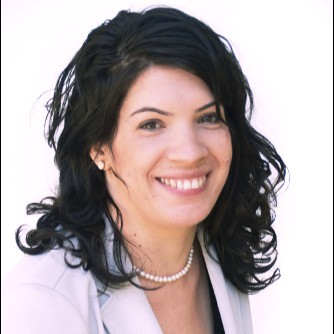It was a roundtable session on climate change anxiety that started it all.
I was at a scientific conference, listening to this panel discussion on climate anxiety. The speakers described it as a prevalent phenomenon among young people, framing climate-informed therapy in much the same way that we talk about trauma-informed therapy.
As I sat there, taking it all in, I couldn’t help but wonder: Is this really as common as they’re saying?
Curiosity got the better of me. I started asking people in the seats around me about their own experiences with climate anxiety in therapy practice. To my surprise, most attendees admitted they were attending the panel out of curiosity or activism, just like I was—not because they’d personally come across this issue with clients.
As I continued my informal survey after the session ended, one clinician shared that she indeed had a 14-year-old client grappling with climate anxiety and guilt over his impact on global warming. Intrigued, I asked where she practiced. Her answer? New York City—Fifth Avenue.
The Inspiration to Dig Deeper into the Science
Leaving the conference, I felt a gnawing unease. I just couldn’t take my mind off of that panel and the speakers’ sweeping claims about the prevalence of climate anxiety in clients seeking therapy.
It was supposed to be a scientific conference, yet these assertions were based mostly on anecdotal experiences. The lack of evidence was troubling. Where was the hard data validating this trend?
This discrepancy inspired me to dig deeper. Eleos’s vast and diverse database offered a unique opportunity to bridge this gap. Here was a chance to leverage real-world data from thousands of therapy sessions across multiple organizations to determine whether climate anxiety was truly a widespread issue—as the presenters (and the media) claimed—or just a buzzword whose popularity didn’t match its real-world scope.
The Surprising Truth About Climate Anxiety in Therapy
Ours is the first large-scale study analyzing real-world data from therapy sessions to assess the prevalence of climate anxiety in clinical settings. Previous studies on this topic were small-scale, often involving participants who were already highly engaged in climate activism. But our study—titled, “Detecting Climate Anxiety in Therapy through Natural Language Processing”—aimed to analyze a broader and more representative sample. Together with Lidor Bahar, Data Science Team Lead at Eleos, and Dr. Simon Rego, Chief of Psychology at Montefiore Health System, we looked at:
- 32,542 therapy sessions from
- 23 behavioral health programs across
- 12 US states.
The findings were illuminating: climate and weather-related topics were brought up in less than 1% of all therapy conversations.
Specifically, climate change or global warming was explicitly mentioned in only 0.3% of sessions. This was a stark contrast to the claims made by news outlets and some members of the scientific community.
The Stats on Climate Anxiety
| States Represented | BH Programs Represented | Total Number of Sessions Reviewed | % of Sessions with Mentions of Climate Anxiety |
| 12 | 23 | 32,542 | 0.3% (98 sessions) |
Not only were mentions of climate change rare, but we also found that when climate change (or even weather) was mentioned, it was often in the context of self-care or leisure activities. For example, a client might be talking about planning a weekend outing and say something like, “I was hoping to go to the park, but it’s too hot out—climate change, I guess.” Discussions of climate anxiety or eco-anxiety, though, were rare. Interestingly, clients with more symptoms of depression or anxiety mentioned climate and weather even less than clients with fewer symptoms.
Why Isn’t Climate Anxiety Dominating Therapy Sessions?
Reflecting on our findings, I can’t help but wonder why climate anxiety isn’t more prevalent in therapy sessions. I believe climate change is a real and direct threat to our well-being as a species, and many people agree. So why aren’t we talking about this threat with our therapists?
I have a few theories.
Chief among them: socioeconomic status. Eleos primarily serves community mental health organizations. So, our data is representative of populations in community settings—which may not mirror those in private practice. Clients in these community clinics often face immediate, urgent needs and concerns.
When daily survival is at stake, worrying about global issues is a luxury.
I think back to my own experiences with clients during times of intense political turmoil, such as wars or bombings. During these periods, clients mentioned political strife only when it directly impacted their lives—quickly refocusing on their immediate, personal concerns. Their attention was consumed by day-to-day challenges and survival, not distant and abstract threats. This pattern suggests that while climate anxiety is real, it may not emerge in therapy unless it has a direct and immediate impact on the client’s life.
It’s also interesting how clients with heightened anxiety and depression symptoms tend to avoid discussing climate issues even more. Maslow’s hierarchy of needs suggests that individuals prioritize their immediate survival and well-being over broader existential concerns. At the bottom of Maslow’s pyramid are basic needs like food, water, and safety; the middle layers encompass psychological needs such as belonging and esteem; and at the top is self-actualization. Individuals with severe anxiety and depression are likely spending a lot of time at the “bottom” of the pyramid, more so than their less anxious counterparts. But as climate change increasingly impacts the day-to-day lives of people in therapy, it will likely move from being a higher-level concern to a basic need. If this theory holds, we can expect to see discussions about climate change more often in therapy sessions.
Therapy in a Warming World
Though I suspected there would be a difference between the confidence of the scholars at the conference and what the data actually showed, the stark discrepancy illuminated by our study was startling. But in science, we go with the data, even if our gut feeling suggests otherwise. Making bold claims about the magnitude of climate anxiety expression in therapy without solid evidence can have serious consequences.
If we insist that climate anxiety is a widespread issue without the data to back it up, we risk being out of touch with the real concerns of the populations in our care.
This disconnect can undermine our credibility as mental health professionals and may even hinder our ability to drive meaningful change around climate issues. People might see us as pushing an agenda rather than addressing their actual needs and concerns.
Since we’re not seeing a lot of climate anxiety in therapy sessions right now, we shouldn’t get ahead of ourselves. Our continuing education, our discourse as a profession, and our conversations with clients should reflect what the research actually says—not what we think it should. However, it’s still important to be prepared for a future in which climate change anxiety becomes a more significant mental health issue.
As the effects of climate change become more immediate, concerns about it will likely surface more in therapy sessions. But it doesn’t appear to be happening yet—at least, not in community mental health. And while I feel strongly that the mental health field will need to evolve to meet this need eventually, we must let our clients set the pace. We must be ready for the challenges ahead, acknowledging the existence of climate anxiety—but not assuming that it’s a primary issue for every client.
Because while science has validated that the climate is changing, it has yet to validate the impact on our clients.
To learn more about our scientific research efforts at Eleos, visit our Science page.

